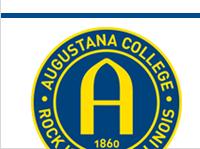Document Type
Poster
Publication Date
Spring 4-20-2022
Disciplines
Geomorphology | Natural Resources and Conservation | Terrestrial and Aquatic Ecology | Water Resource Management
Description, Abstract, or Artist's Statement
Fish assemblages are viable indicators of stream quality because they respond predictably to changes in abiotic and biotic factors, such as habitat and water quality, and human exploitation and species additions. In this a study we examined the relationship between fish abundance, diversity, and IBI (Index of Biotic Integrity), and urban and agricultural land use in Scott County, IA and Rock Island County, IL. Fish were sampled during the summer of 2021 within 12 local watersheds, which contain a variety of land use types. We followed a standardized sampling method of a single pass with a backpack electrofishing unit through a 50-meter stream segment with seine nets on the upstream and downstream reaches. Land use data and watershed delineation were calculated using ArcGIS Pro tools. Water quality data was compiled from 2000 through 2021 and averaged for analysis. Index of Biotic Integrity (IBI) was found using the Illinois IBI calculator provided by the Illinois Department of Natural Resources. This study yielded an IBI range of 0-37. Sites in Illinois averaged an IBI score of 12.6, and the Iowa sites averaged 21.15. We collected a total of 1,841 fish and 28 species. A multiple regression shows a stronger relationship with conductivity, discharge and IBI (r2= 0.798), as well as various water quality metrics, like chloride. Conductivity and chloride are strongly correlated (r2 = 0.179). In the Midwest, chloride is often the result of overusing road salts in the winter months. In addition to water quality impacting fish assemblages and diversity, the study found that stream width has an important relationship with IBI. As streams become wider, IBI scores increase (r2 = 0.474). Typically, our streams were smaller in the rural headwaters, and wider in the downstream urbanized reaches. We hypothesize that this relationship between IBI and stream width is due to more diversity in habitat and flow regimes, as well as higher carrying capacities of fish populations. The results of this study show a weak relationship between urban and agricultural land use and fish assemblages. Rather, stream quality variables are more impactful on IBI. Conductivity and chloride relate back to urbanization because as the amount of impervious surfaces increases, the use of road salts increases. Chloride is the pollutant that has the biggest impact on fish assemblages in the streams sampled. Fish diversity and abundance are impacted more by stream quality variables than catchment-scale land use.
Augustana Digital Commons Citation
Ford, Benjamin and Geedey, Kevin. "Land Use Effects on Fish Assemblages in Mississippi River Tributaries in Scott County, IA and Rock Island County, IL" (2022). Urban Watershed Project.
https://digitalcommons.augustana.edu/urbanwatershed/3
Creative Commons License

This work is licensed under a Creative Commons Attribution 4.0 International License.
Included in
Geomorphology Commons, Natural Resources and Conservation Commons, Terrestrial and Aquatic Ecology Commons, Water Resource Management Commons

